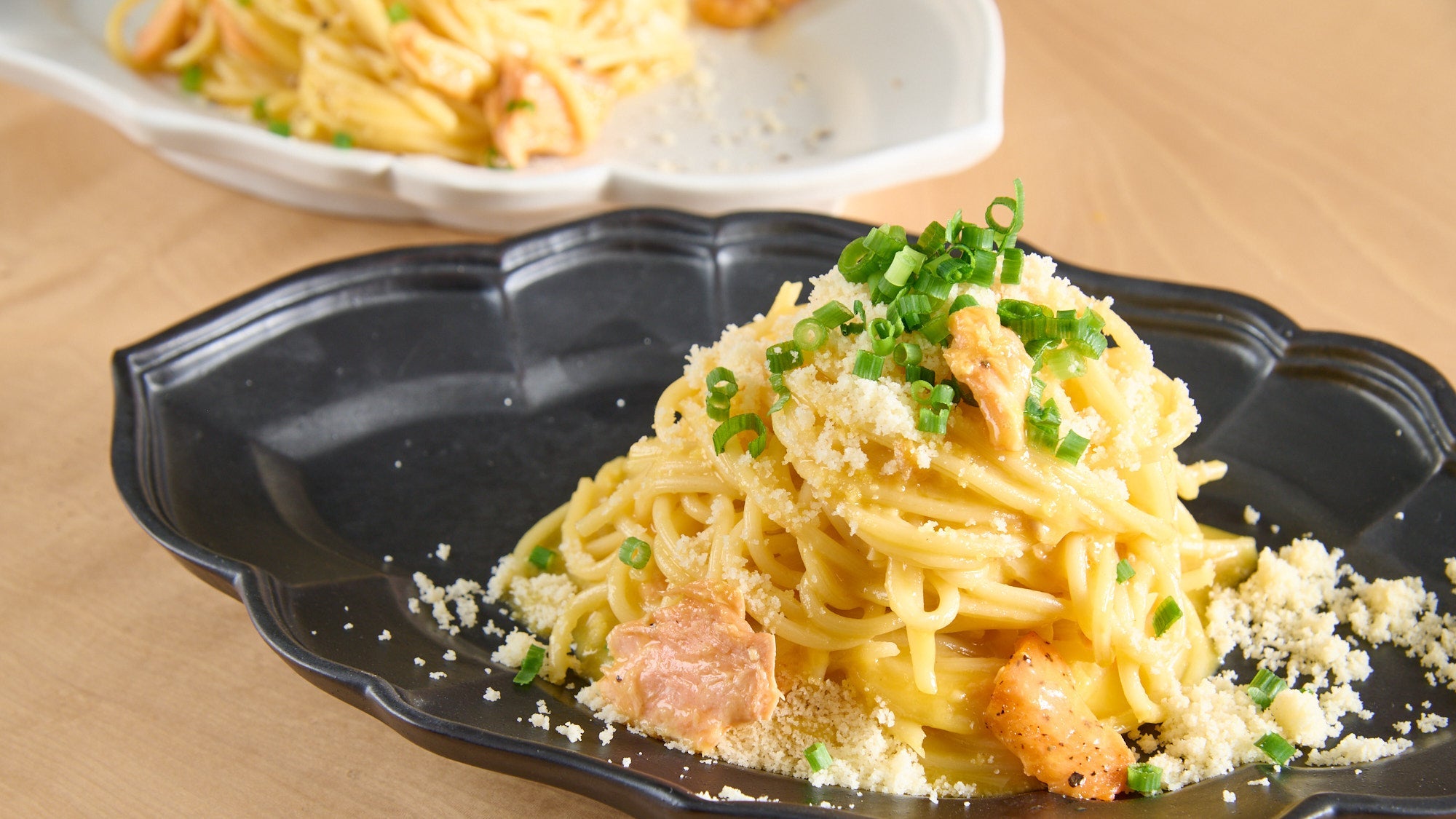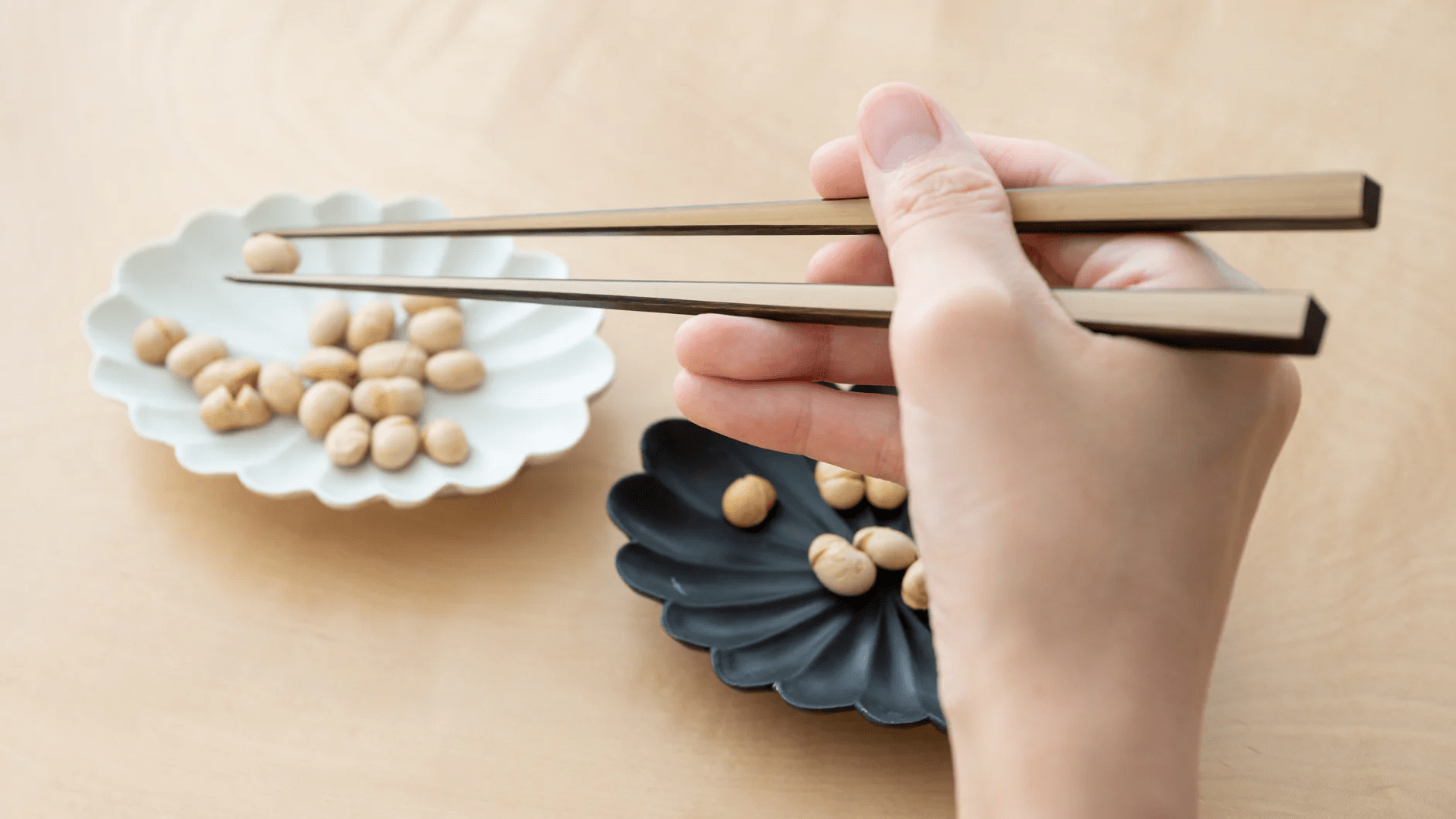
Baby Steps into Japanese Cooking with Sylvia Wakana
Written by Team MUSUBI
A friendly, nurturing guide may be all it takes for even the most timid of beginners to venture into the expansive world of Japanese home cooking. And in this digital age, this role often falls onto online creators, whose personality, knowledge, and words of encouragement help hundreds of people around the world in their aspirations to cook delicious meals for themselves and their loved ones.
We spoke to one such creator, Sylvia Wakana, whose multicultural background and love of accessible Japanese cuisine has gained her a large following on platforms such as TikTok, Instagram, and YouTube. On her blog and social media she shares her love of yoshoku, or Western-influenced Japanese dishes, and the experience of growing up between two cultures.
table of contents
From Influences to Influencing

Sylvia Wakana Gunde is a Japanese-American digital creator, blogger, and all-around foodie. Having caught the blogging wave of the mid-2000s, she began sharing her forays into cooking and other delicious adventures, which grew into 210.5K followers on TikTok, 67K followers on Instagram, and 4.1K subscribers on YouTube, as well as a high-ranking cooking blog. “I wanted to share my joy of cooking and my culture with others,” she says about her motivations for starting her blog. Now she aspires to connect people through food.
Despite being self-taught, she says she has enjoyed cooking since she was young. Growing up with a Japanese mother in Los Angeles, her love of cooking was fostered by frequent summer holidays in Japan where she enjoyed authentic Japanese food and kept the connection with her Japanese heritage alive.
Sylvia says she is grateful for the in-depth exposure to multiple cultures and the broader perspective she has gained from having two countries to call home, especially because Japan and America are so vastly different. However, this comes with the challenge of having family and friends living an ocean apart. “You are constantly missing someone regardless of where you are.”
A Love for Yoshoku
Sylvia’s cooking style was greatly influenced by her upbringing. Just like her mother, who did not cook only Japanese cuisine, Sylvia also loves preparing a variety of foods. “My favorite kind of food is yoshoku, or Western-style Japanese food, so I like making things like Hamburg steak, curry, or omurice,” omelet rice. When asked about the first thing she wants to eat whenever she arrives in Japan, she says that she gravitates towards the trusty convenience store onigiri and bottled milk tea as soon as she lands in Japan. But she also praises Japan’s soup dishes, such as nabeor ochazuke, for being undeniable “comfort foods.”
Cooking Made Easy
As the popularity of Japanese cuisine has skyrocketed in recent years, so have the number of people who are curious to prepare it themselves. The only question is, how? But Sylvia has you covered. Her blog not only has accessible recipes, but also useful lists of essential Japanese ingredients and cooking utensils that you can easily purchase online. This makes it easy for anyone to start.
Her open-minded approach to cooking is one of the reasons her content is so beginner-friendly. For those who are intimidated by cooking in general, and Japanese cuisine in particular, she has a simple tip.
“Just jump into it and don’t expect it to be perfect the first time. And remember, flavors are all very personal so you might not like something the first time but keep tweaking the dish to make it taste the best for you!”
She wishes more people knew that Japanese cooking “doesn't have to be hard and that there is a wide variety of types of foods and flavors in Japanese cuisine.” And when you are ready to elevate your cooking, she advises to spend time studying and perfecting your skills: “Look at different techniques and practice, practice, practice!”
An Open-Minded Approach to Recipes

When developing the recipes she posts on her blog and social media, her starting point is usually her favorite staples of yoshoku cuisine.
“I usually use combinations of flavors that I personally like and just keep adjusting until I settle on a flavor that I enjoy and want to eat more of.”
Authentic Japanese recipes, such as agedashi tofu, or deep fried tofu, often feature on her website. However, she does not shy away from tapping into her unique perspective by diversifying her content with cross-cultural cuisine. Dishes inspired by the Japanese community in the States, such as Hawaiian spam musubi, are seamlessly showcased alongside interesting fusion cuisine, such as Japanese curry pot pie, which uses puff pastry and Japanese curry roux, to create a comfort food that feels warmly familiar on both sides of the ocean. And adding Japanese flavors to Western desserts has yielded creative takes such as yuzu olive oil cake and miso butterscotch cookies.
Multicultural Motherhood
Her son’s adorable smile routinely features on her social media, as she often shares family vlogs and child-friendly recipes. Having herself experienced two vastly different cultures growing up, she says she is “excited to take him back and forth to Japan as well.”
When we inquire how she plans to introduce him to new foods as he grows, she says, “I am very lucky in that my son pretty much eats anything I put in front of him and he is a very good eater in both variety and volume. He makes it easy.”
“I especially want to share Japanese culture with my son through food as he grows up.” Going so far as to develop her own recipe for baby-friendly fried shrimp, or ebifry, many of her favorite dishes, such as omurice are in general very popular with children.
Sylvia’s Dinnerware Picks
Sylvia’s approach to plating is governed by an intuitive sense of color and design, and the atmosphere she aims for usually depends on how she is feeling at the moment. She also considers the practicality of the tableware she chooses for each meal.
“I am always drawn to things that are simple but not boring. I love having the food be the focus with the dishware as a complement.” It is no wonder then that she is especially fond of the USUKI line of monochromatic dinnerware which features an assortment of sizes and shapes with an emphasis on sculptural rims and floral flourishes.
Other items that have recently caught her eye are “the gorgeous, fancy bento or jubako boxes, like the Hibiki Yamanaka Lacquerware box with dividers. I love the visuals and it always reminds me of fancy kaiseki meals in Japan. I hope to be able to recreate that vibe at home one day!”
She shares that she is partial to the classy, high-quality wares she finds on MUSUBI KILN, frequently using them in her blog and social media content, much to our delight.
Sylvia’s Miso Carbonara with Salmon and Ikura
Italian cuisine meets Japanese umami flavors in this delectable pasta dish that can be on your dinner table within thirty minutes. Sylvia kindly shared this recipe with the readers of MUSUBI KILN, plating it with her favorite Usukiyaki series tableware. This easy recipe, a complex mixture of Western and Eastern tastes served with simplicity and elegance, is worth replicating at home, don’t you agree?

Ingredients
Servings: 4
- 12 oz spaghetti (about 3/4 box)
- 1/4 lb salmon fillet
- 2 large eggs (whole), room temperature
- 2 large egg yolks, room temperature
- 1 cup freshly grated parmesan cheese
- 2 tbsp white miso
- salt & pepper
- green onions, sliced, for garnish

Instructions
Prep Time: 5 minutes
Cook Time: 25 minutes
Total Time: 30 minutes
Step 1
Salt and pepper the salmon fillet. In an oven preheated to 375 °F (190 °C), cook the salmon for 15 minutes or until cooked through. If you do not have an oven, you can cook the salmon in a frying pan. Use a fork to shred the salmon into small chunks. Set aside.



Step 2
Heat a large pot of water on the stove. Pour the water into a large mixing bowl to warm it up and set the bowl aside.

Step 3
In a medium sized bowl, whisk together the eggs, egg yolks, parmesan cheese, white miso, and some salt and a decent amount of pepper.

Step 4
Heat another large pot of water on the stove. Cook your spaghetti until al-dente (approximately 10 minutes). Drain the pasta but reserve 1 cup of pasta water.

Step 5
Pour out the warm water from the large mixing bowl and wipe the bowl dry. Mixing the ingredients in this heated up bowl will help keep them warm as well. Put in the cooked spaghetti, pieces of salmon, and the egg/cheese mixture and mix well. If your sauce isn't looking creamy enough, add a small amount of pasta water as needed (work in small increments, one tablespoon at a time).


Step 6
Top the pasta with green onions and extra parmesan cheese and serve immediately.

Notes
Recipe Created by: Sylvia Wakana (http://sylviawakana.com)








4 comments
@Barbara Yes! We believe that your stomach and your heart will be satisfied!
Team Musubi
Sounds yummy, I’ll have to try this recipe soon.
Barbara Myslinska
That’s wonderful to hear! We’re so glad your family enjoyed the recipe. Using Japanese canned tuna sounds like a fantastic idea. Thank you for sharing your experience!
Team Musubi
I just made this recipe for my family and everyone loved it! I didn’t have salmon, so I used Japanese canned tuna and it worked great! Thank you
Garin Hussenjian
Leave a comment
This site is protected by hCaptcha and the hCaptcha Privacy Policy and Terms of Service apply.